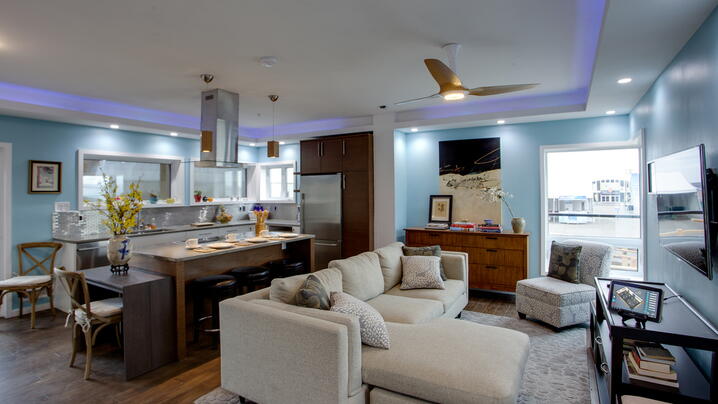
A mobile app that monitors and controls our energy use, rooms that can be moved to suit the tenants, living-edible walls, use of reclaimed building materials, and charging stations for our electric vehicles (or electric bikes). These are just a few of the innovative ideas that were showcased in 19 model homes at this year’s Solar Decathlon in Irvine, CA.
Celebrating its biennial competition, the U.S. Department of Energy sponsored Solar Decathlon challenges collegiate teams to design, build, and operate solar-powered houses that are cost-effective, energy-efficient, and attractive. The competition, which was held over the last two weeks, saw 19 teams across the U.S. and around the world competing to see just how well they were able to design the homes.
The students, or as they preferred to be called, decathletes, spent nearly 2 years raising money, designing and building the homes. It’s a demanding process that all leads up to 10 contests, including a movie night and a dinner party night as part of the home entertainment contest, an affordability contest that measures the homes’ construction costs, and an energy balance contest.
But the most inspiring aspect is often where the houses end up. Although most homes will return to their respective universities to act as demonstration and learning labs, many of the homes will be put to the test. Team DC’s home has been fitted as a bio-medical suite and will be given to a wounded warrior, and Team Stanford’s home will reside in the Jasper Ridge Biological Preserve, where a park ranger will call it home.
In competitions past, the homes have boasted extreme and futuristic designs (see California 2011), but this year the homes felt more like ”today’s homes”. Some teams made a point to explain their design choices and how they want the homes to complement their local environments. Team Middlebury College sees their home as one piece of a larger human and natural ecosystem and expects to see it integrated into an existing walkable community.
Through solar arrays all of the competition homes produced at least as much energy as they used. Let’s say that again - all of the homes produced at least as much energy as they used.
As homeowners and municipalities alike are looking for ways to reduce energy costs, these students are offering innovative and affordable options, some of which are easily-utilized, simple ideas for energy-savings.
----------
Is your community interested in getting started with solar energy? Through the SunShot Solar Outreach Partnership, ICMA is delivering free custom regional workshops to communities across the nation. The workshops are designed to provide actionable information on overcoming local-level barriers to solar, addressing soft costs, and implementing a successful local solar program. If you are interested in hosting a workshop, find more information here.
Resources:
- U.S. Department of Energy, Solar Decathlon
- Solar Powering Your Community: A Guide for Local Governments
- Hosting a Solar Powering Your Community workshop, info sheet
New, Reduced Membership Dues
A new, reduced dues rate is available for CAOs/ACAOs, along with additional discounts for those in smaller communities, has been implemented. Learn more and be sure to join or renew today!
